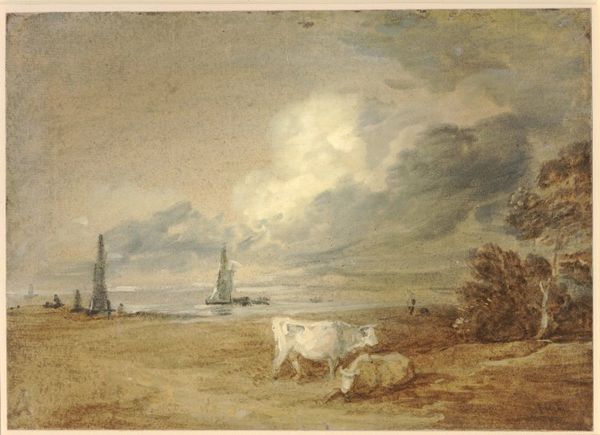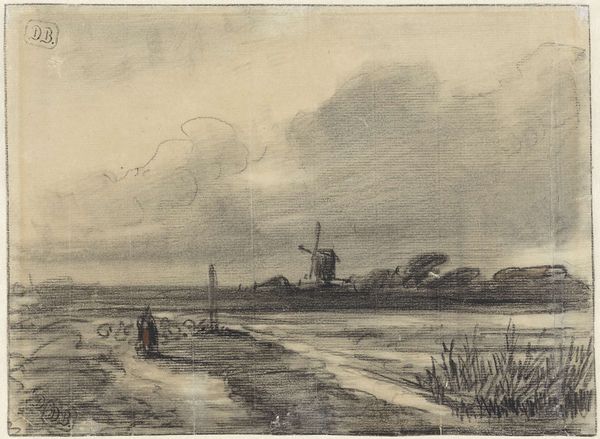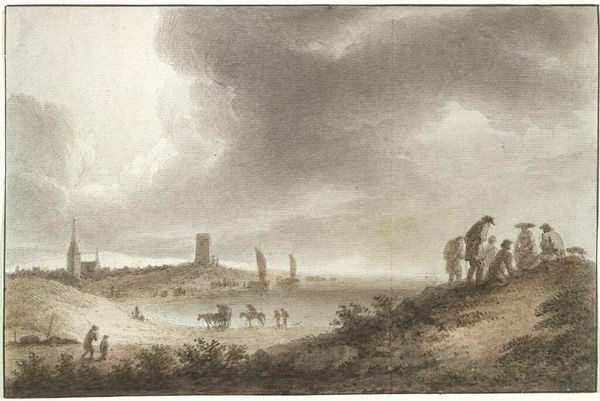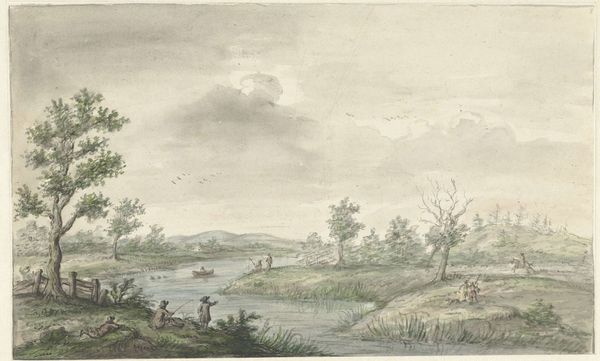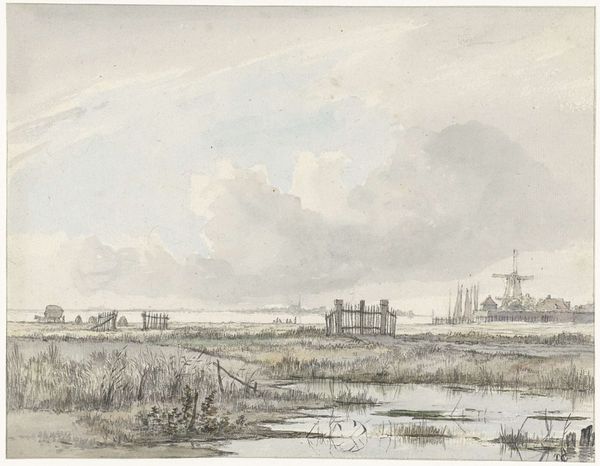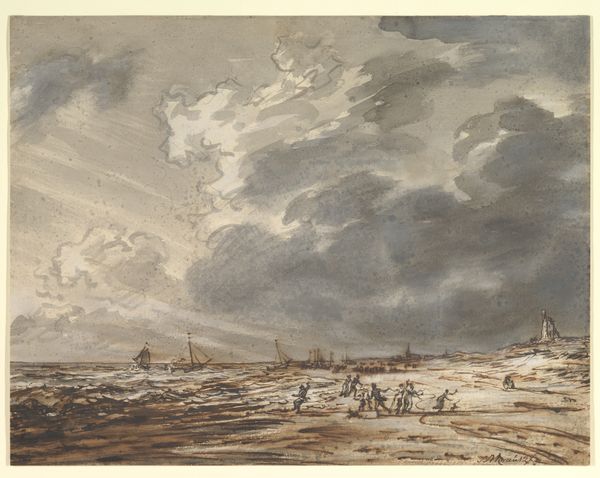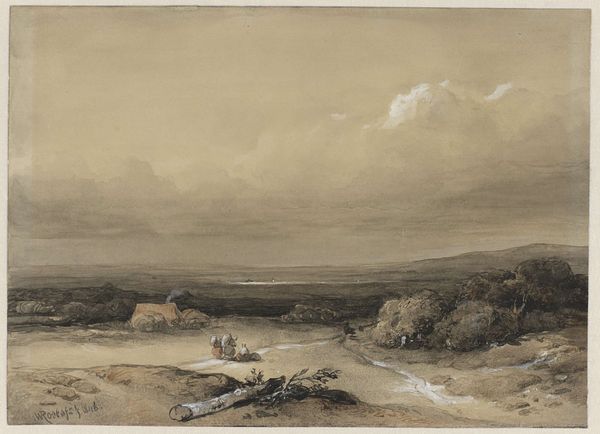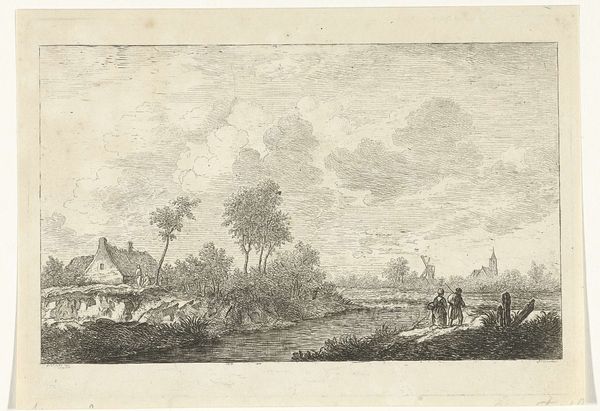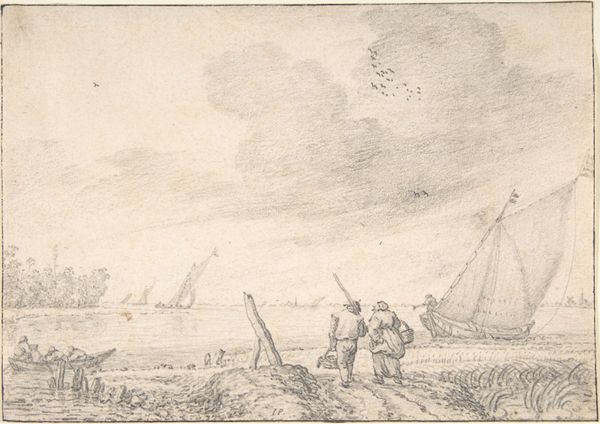
plein-air, watercolor
#
plein-air
#
landscape
#
figuration
#
watercolor
#
romanticism
#
watercolour illustration
Dimensions: height 161 mm, width 228 mm
Copyright: Rijks Museum: Open Domain
Editor: So this is Jurriaan Andriessen’s “De Baak, een badplaats aan het IJ,” or "The Beacon, a bathing place on the IJ", made in 1803 using watercolor. The colours are muted, the sky vast, and it really evokes a sense of everyday life by the water, with these figures wading in. What symbols or cultural touchstones stand out to you in this piece? Curator: The overcast sky dominates, almost pressing down on the scene. The grey is heavy, almost foreboding, while the people appear carefree. Note how the beacon, usually a symbol of guidance and safety, seems diminutive. Consider how the presence of figures in a landscape – particularly nude ones in the tradition of Romanticism – is often intended to contrast raw, idealized humanity with sublime nature. Do these figures suggest harmony or perhaps vulnerability to the natural elements in this environment? Editor: That's an interesting way to put it. It's like they are dwarfed by the vastness. Does that have anything to do with the changing attitudes towards nature at the time? Curator: Precisely. As society changed, so did people's understanding of nature's symbolic meanings and emotional implications. As a site for cultural interaction, a landscape can suggest everything from freedom and leisure to an uneasy or ambivalent response to our changing environment. Notice also how the distant ships on the horizon speak to trade and travel – a silent but powerful visual element from that period. Editor: So the clouds and open water are not just aesthetic, but they're carrying some weight here. Thank you, I will definately keep these historical contexts in mind when observing artworks in the future. Curator: Indeed, a painting’s lasting value may be precisely that conversation it creates with people across generations, using visual shorthand to ask: Where do we locate ourselves within an environment and its collective symbols?
Comments
No comments
Be the first to comment and join the conversation on the ultimate creative platform.
